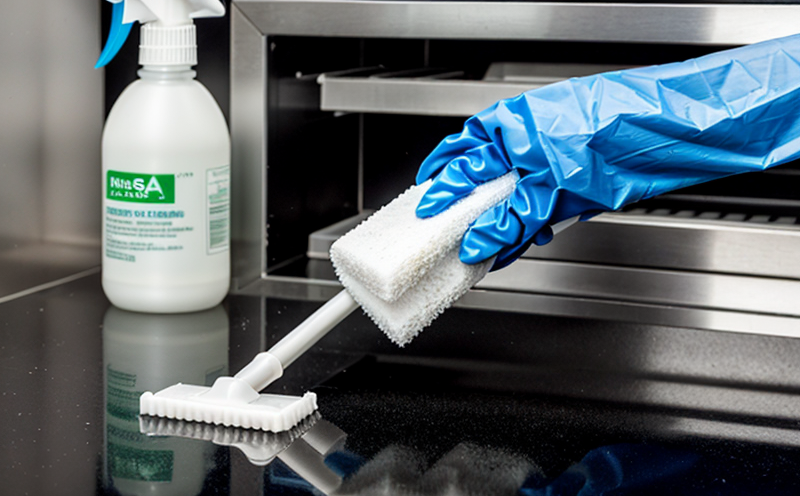DIN 58953 Sterilization Cycle Resistance Testing of Hygiene Plastics
The DIN 58953 standard is pivotal in ensuring that hygiene plastics withstand rigorous sterilization processes without compromising their integrity or functionality. This testing method evaluates the resistance of polymers and plastics used in medical devices, personal care products, and other hygiene items to repeated sterilization cycles using ethylene oxide (EO) gas.
The importance of this test cannot be overstated, especially for sectors like healthcare and pharmaceuticals where contamination can lead to severe health risks. Hygiene plastics must not only endure the sterilization process but also maintain their shape, strength, and chemical properties under repeated exposure to EO gas. This testing is crucial because it ensures that these materials continue to perform effectively in their intended applications after multiple sterilizations.
Testing according to DIN 58953 involves subjecting samples to a series of ethylene oxide sterilization cycles followed by rigorous quality checks. These checks include dimensional stability, mechanical properties, and chemical resistance assessments. Compliance with this standard is mandatory for manufacturers aiming to meet regulatory requirements set by bodies such as the FDA (U.S. Food and Drug Administration) or the European Commission.
The process begins with selecting appropriate specimens that accurately represent the end products. Specimens are then exposed to ethylene oxide sterilization cycles, typically ranging from 25 to 30 cycles depending on the material's expected lifespan in use. After each cycle, samples undergo inspection for any changes in appearance, texture, or mechanical properties.
Dimensional stability tests measure whether there has been a significant change in the dimensions of the specimen after exposure to sterilization cycles. Mechanical property evaluations assess strength and flexibility through tensile testing, flexural testing, and impact resistance tests. Chemical resistance checks ensure that the material does not degrade when exposed to cleaning agents or other chemicals used during hygiene processes.
Testing according to DIN 58953 is essential for ensuring product quality and patient safety in healthcare settings. It guarantees that materials used in critical applications remain reliable even after numerous sterilization cycles, thereby reducing the risk of cross-contamination and infections.
Scope and Methodology
| Step | Description |
|---|---|
| Sample Selection | Select specimens that accurately represent the end products to be tested. |
| Sterilization Cycles | |
| Inspection | Inspect samples for any changes in appearance, texture, or mechanical properties after each cycle. |
| Dimensional Stability | Measure and compare the dimensions of specimens before and after sterilization to check for dimensional stability. |
| Mechanical Property Evaluation | Evaluate strength and flexibility through tensile testing, flexural testing, and impact resistance tests. |
| Chemical Resistance Checks | Ensure that the material does not degrade when exposed to cleaning agents or other chemicals used during hygiene processes. |
Competitive Advantage and Market Impact
- Ensures compliance with international standards, enhancing market access in Europe and beyond.
- Reduces the risk of product recalls due to sterilization failure, protecting brand reputation.
- Promotes innovation by enabling manufacturers to develop safer, more reliable hygiene products.
- Achieves regulatory compliance with strict international standards like DIN 58953 and ISO 11135.
- Enhances product quality through rigorous testing protocols, ensuring consistent performance across batches.
- Facilitates smoother operations by identifying potential issues early in the development process.
Use Cases and Application Examples
- Medical devices such as catheters, surgical instruments, and wound dressings.
- Personal care products like razors, toothbrushes, and contact lens cases.
- Environmental hygiene supplies including mop heads, cleaning cloths, and garbage bins.
- Manufacturers of medical devices aiming to meet stringent regulatory requirements.
- R&D teams seeking to optimize material performance in repeated sterilization conditions.
- Quality control departments ensuring product integrity post-sterilization for end-users.





